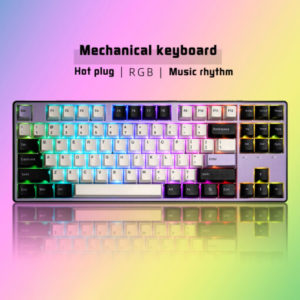Description
FAQ
Is it genuine?
Yes, it is genuine Microsoft windows
How long will it last?
Lifetime
Can I use the key multiple time?
Yes you can use it multiple time on same pc.
Will I need to install windows again to use the key?
No. You can use it on your existing setup
Do I get any guarantee or support?
Yes you will get lifetime support from us and Microsoft. If anything happens we will provide full refund or replace the key.
Windows 10 features
The familiar Start Menu, which Microsoft replaced with Live Tiles in Windows 8, returned in Windows 10. Users can still access Live Tiles and the touch-centric Metro interface from a panel on the right side of the Start Menu, however. Microsoft Windows 10 Continuum?allows users to toggle between touchscreen and keyboard interfaces on devices that offer both. Continuum automatically detects the presence of a keyboard and orients the interface to match.
Windows 10’s?integrated search?feature allows users to search all local locations, as well as the web simultaneously.
Microsoft Edge debuted with Windows 10 and replaces Internet Explorer as the default web browser. Edge includes tools such as?Web Notes, which allows users to mark up web sites, and Reading View, which allows users to view certain websites without the clutter of ads. The browser integrates directly with?Cortana, Microsoft’s digital assistant, which is also embedded within Windows 10.
Cortana integrates directly with the Bing search engine and supports both text and voice input. It tracks and analyzes location services, communication history, email and text messages, speech and input personalization, services and applications, and browsing and search history in an effort to customize the OS experience to best suit users’ needs. IT professionals can disable Cortana and some of its features with Group Policy settings.
Windows 10 security
Microsoft Windows 10 integrated support for?multifactor authentication?technologies, such as smartcards and?tokens. In addition,?Windows Hello?brought biometric authentication to Windows 10, allowing users to log in with a fingerprint scan, iris scan or facial recognition technology.
The operating system also includes virtualization-based security tools such as?Isolated User Mode, Windows Defender Device Guard and Windows Defender Credential Guard. These Windows 10 features keep data, processes and user credentials isolated in an attempt to limit the damage from any attacks.
Windows 10 also expanded support for?BitLocker?encryption to protect data in motion between users’ devices, storage hardware, emails and cloud services.
Windows 10 system requirements
The minimum Windows 10 hardware requirements for PC or 2-in-1 device are:
Processor:?1 gigahertz (GHz) or faster processor or system-on-a-chip (SoC)
RAM:?1 gigabyte (GB) for 32-bit or 2 GB for 64-bit
Hard disk space:?16 GB for 32-bit OS 20 GB for 64-bit OS
Graphics card:?DirectX 9 or later with Windows Display Driver Model 1.0
Display:?800×600
The minimum Windows 10 Mobile hardware requirements for a smartphone are 1 GB RAM, 8 GB flash storage, a Trusted Platform Module,?Unified Extensible Firmware Interface, 32 bits of color per pixel, and 720p screen resolution. Smartphones also require a Snapdragon SoC from Qualcomm Technologies.
Windows 10 upgrades
IT professionals and end users have two options to upgrade from Windows 7 or 8.1 to Windows 10. One is by installing and running the?Get Windows 10 application. The other is to use an image file with a designated group of settings and applications to upgrade to Windows 10.
When upgrading to Windows 10 from Windows XP, Microsoft only officially supports a clean install where nothing carries over from the previous OS. Application and hardware compatibility could be a problem with XP upgrades because the OS is so old.
Microsoft provides the Assessment and Planning Toolkit to help determine how ready existing systems and versions of Windows are for an upgrade.
Windows 10 updates
There are four licensing structures, called branches, that dictate how and when Windows 10 devices receive updates.
The Insider Preview Branch is limited to members of the Microsoft Insiders Program. With this branch, IT professionals get access to the latest Windows 10 updates before they are made available to the general public, which gives them more time to test out the newest features and evaluate compatibility.
Current Branch, which is designed for consumer devices, delivers updates automatically to any device running Windows 10 that is connected to the internet and has?Windows Update?on.
Current Branch for Business is an enterprise-focused option that is available for the Professional, Enterprise and Education editions of Windows 10. It gives IT four months to preview the latest update and eight months to apply it. IT must apply the updates within the eight-month timeframe or it loses Microsoft support.
The?Long Term Servicing Branch (LTSB), which is geared toward systems that cannot afford downtime for regular updates such as emergency room devices and automatic teller machines, gives IT the most control. With the LTSB, IT receives full OS updates every two to three years. IT can delay the update for up to 10 years. If IT does not update within 10 years it loses Microsoft support.
No matter which update branch an organization uses, security and stability updates, which patch security holes, protect against threats and make sure the OS continues to run smoothly, still come on a monthly basis.











Reliable as Always. Keys worked without an issue. 🙂